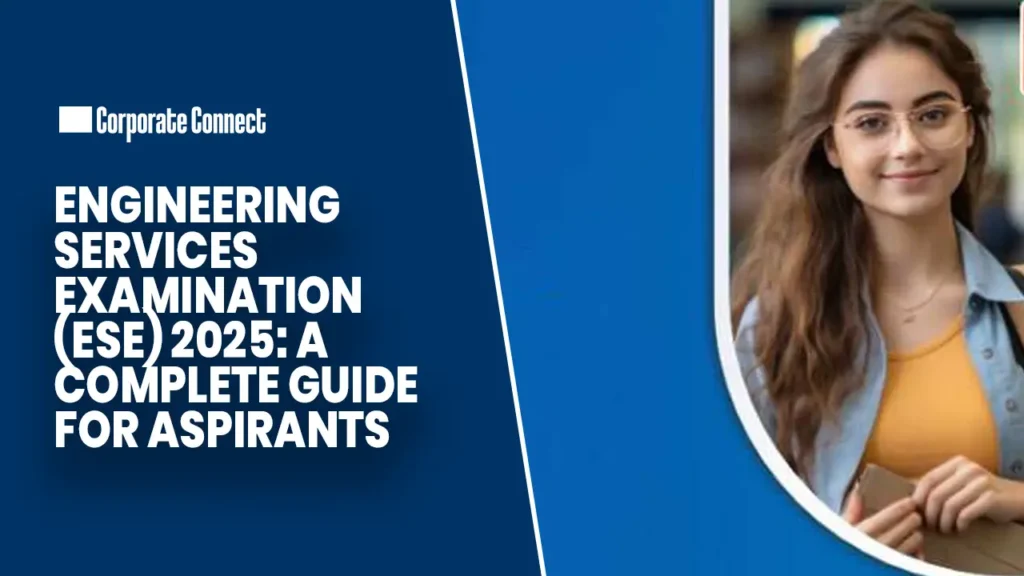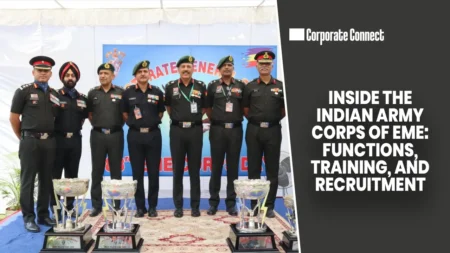Engineering Services Examination (ESE) 2025: A Complete Guide for Aspirants
Written By Jaya Pathak
The Union Public Service Commission annually conducts engineering service examination. Engineers are recruited to technical and managerial post across central government departments. This engineering examination follows a three stage selection process consisting preliminary examination along with mains and personality test.The engineering examination follows a three-stage selection process consisting preliminary examination along with mains and personality test.
In this blog, we are going to have a deeper understanding about the ESE:
Structure of 2025 Examination:
- Preliminary examination: The prelims exam is objective in nature. It consists of paper one and paper 2. Paperwork carries 200 marks in which candidates are given to ours. This paper is common to all discipline. It is of general studies and engineering aptitude.
Paper 2 is also an objective paper but it is discipline specific. Candidates are given 3 hours to complete this paper. It is of 300 Marks and carries 1/3 negative marking. The Prelim examination for both the papers is conducted on the same day.
- Mains examination: Mains examination contains paper one and paper two. It is structured in such a manner that it tests the reasoning, analytical depth and clarity of technical communication of the candidate. Both the paper ask discipline specific descriptive which carries a weight is of 300 marks.
- Personality test: The last stage is the interview or the personality test which carries a weightage of 200 marks. It checks the decision-making ability and communication of the candidate.
Eligibility Criteria
The candidate must have an Indian nationality. He or she must fulfill the age limit along with educational qualification as well as medical standards as per as the official notification of the examination. A recognized engineering degree aligned to one of the notified disciplines is required for technical papers, while equivalent qualifications or specific departmental exceptions (if any) are governed strictly by the notification’s text and annexures. Candidates must also satisfy prescribed physical standards/medical norms where applicable, making the medical standards schedule a mandatory read ahead of application.
Prelims Syllabus: What the Papers Test
Paper I: General Studies and Engineering Aptitude
– Broad coverage includes current issues (national/international), engineering aptitude and logical reasoning, engineering ethics, project management, materials, environment, ICT, drawing and safety basics, and quality standards.
– The intent is to test managerial breadth, situational judgment, and professional awareness expected of a public engineer beyond domain specialization.
Paper II: Discipline-Specific Objective Paper
- Civil engineering
- Mechanical engineering
- Electrical engineering
- Electronics & Telecommunication
Mains Syllabus:
The Main examination comprises two descriptive papers within the chosen discipline, requiring systematic derivations, multi-step problem solving, design reasoning, and clear presentation aligned to the notified syllabi for each branch. The descriptive format emphasizes argumentation quality, standards compliance, assumptions transparency, and real-world applicability—skills essential to public engineering roles.
Marking and Negative Marking
Prelims adopt one-third negative marking for wrong answers to discourage random guessing and reward discriminative thinking; unanswered questions do not attract penalty, and multiple options marked incorrectly are penalized per rule. Mains papers are descriptive with structured marking schemes rewarding methodical solutions and clarity, while the Personality Test adds professional assessment to finalize rank-ordering.
Discipline-Level Breadth: Illustrative Topic Map
Civil Engineering
– Structures and materials (steel, concrete, masonry) paired with geotechnical, hydrology/water resources, environmental, and transport systems define a balanced coverage of design, analysis, and public infrastructure management.
– Surveying and modern geospatial methods support execution planning and measurement integrity, which often feature in applied questions in both stages.
Mechanical Engineering
– Thermal sciences and heat transfer integrate with fluid mechanics and machines for energy conversion foundations, while manufacturing and industrial engineering test productivity, quality, and systems thinking.
– Mechatronics and robotics reflect modern plant automation themes increasingly relevant to public manufacturing and defence-linked installations.
Electrical Engineering
– Core circuits, control, machines, and power systems form the backbone, with electronics and power electronics bridging conversion, drives, and protection in large-scale public utilities.
– Measurements and microprocessors ensure instrumentation literacy and embedded control reasoning consistent with grid modernization and reliability needs.
Electronics & Telecommunication
– Signals, networks, control, devices, analogue/digital design, and core communications test the integrated stack that underpins public communications infrastructure.
– Electromagnetics and microprocessors complete the foundation for RF systems, embedded platforms, and modern telecom operations environments.
Paper I (GS & EA): Smart Coverage Tactics
Treat GS & EA as a secure 120–140 marks segment by anchoring preparation in recurring themes—ethics, management, environment, standards, and quantitative aptitude—and cycling quick-revision notes weekly. Tie current issues to engineering implications (energy transition, resilient infrastructure, digital public goods), producing concise, exam-ready viewpoints for data-anchored MCQs.
Subject-Wise Pointers Aligned to Syllabus:
- Civil: prioritize structural analysis/design, geotechnical, environment, and transport; integrate surveying and water resources for application-style problems and cross-topic linkages.
- Mechanical: align thermodynamics with heat transfer and power cycles; pair fluids with turbo-machinery; couple manufacturing with quality and industrial systems.
- Electrical: drill circuits and control fundamentals; interleave machines with power systems and power electronics; maintain instrumentation fluency.
- E&T: traverse devices → analog/digital → signals/comm → electromagnetics, maintaining block-diagram logic and spectral intuition throughout.
Resources and Prior Papers:
Leverage the official notification and UPSC portal for authoritative updates on scheduling, procedures, and final syllabi, and complement with structured syllabus digests for topic breadth and subdivisions within each branch. Prior paper analysis clarifies difficulty trends and distribution across subtopics within the discipline-specific paper, which should directly inform mock test design.
Application Process and Compliance:
Apply within the notified window on the UPSC website, verify photograph/signature specifications, select centers judiciously, and retain proof of fee payment; all procedural requirements in the notification carry binding force for candidature validity. E-admit cards and center instructions must be checked well in advance, and any discrepancy should be addressed per the redressal channels specified in the notice.
On Interview Readiness:
Interview is a game changer. During the process of interview, the panel may give you a question based on any situation to test your judgment about any particular subject or topic. They also check the understanding of public system and clarity on the recent sectoral developments of the interviewee. While giving the interview, you must focus on explaining the technical concepts in very plain and simple language. Candidates must focus on preparing concise briefs on their final year projects, and peculiar about the work experience and key developments in their specific domain.
Exam-Day Protocols That Matter
For Prelims, pace both papers deliberately, protect accuracy under negative marking, and avoid last-minute option changes unless justified by logic rather than doubt. For Mains, maintain structure—introduction, governing equations/assumptions, stepwise solution, diagrammatic clarity, and a brief conclusion—while allocating time blocks to avoid over-investing in any single question.
Conclusion
ESE rewards consistency, presentation discipline, and wise risk-taking more than sporadic intensity, so align preparation with the official pattern and syllabi while practicing the exact format under time. Begin with the notification in hand, build a realistic calendar, and let revision loops be data-led by error analyses from mocks rather than intuition, an approach that aligns with the examination’s measured and fair design.










